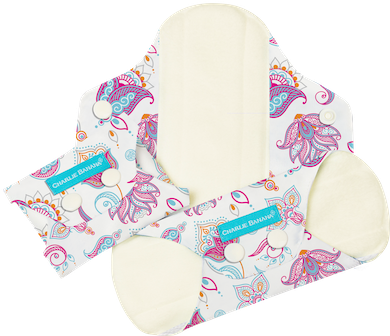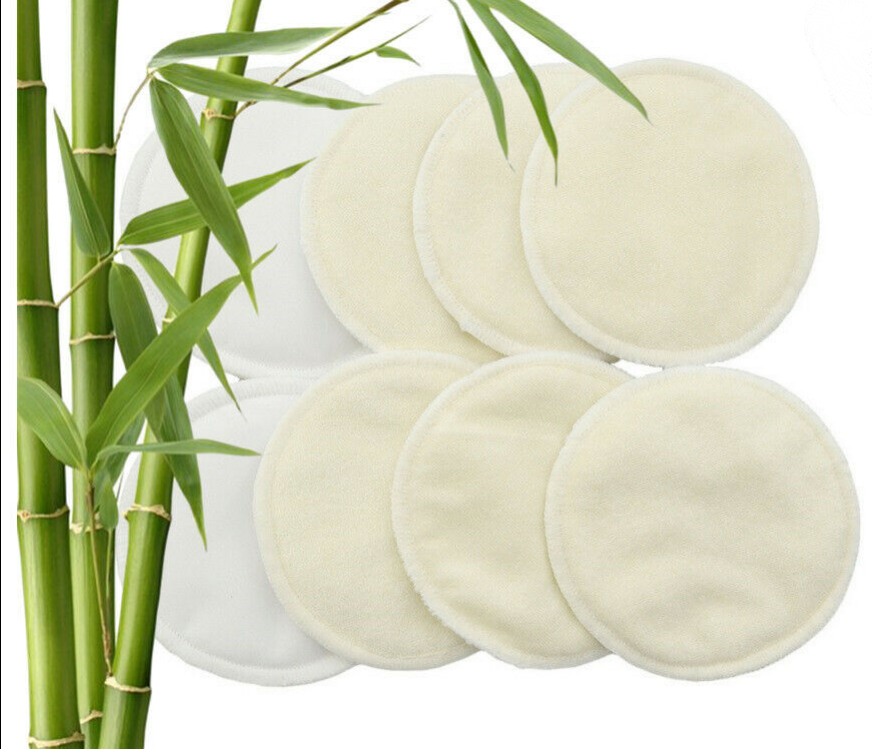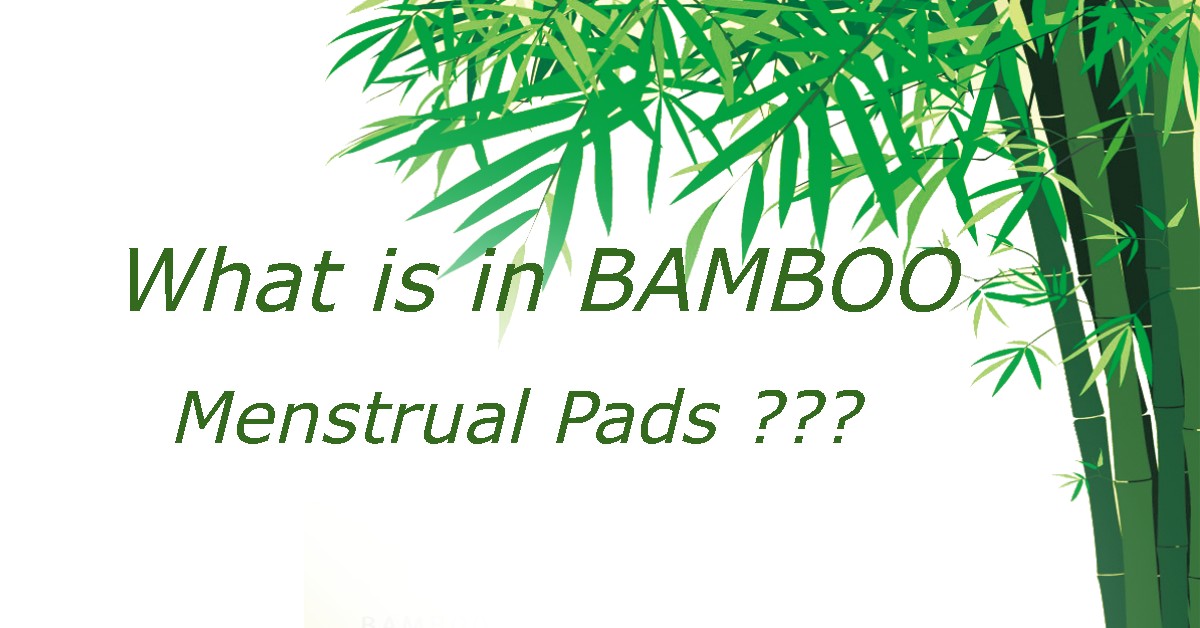Menstrual pads are menstrual pads, right? There are so many different brands, each with their own promise of a myriad of benefits. The thing is that most of these brands are, simply put, just in it for the money. Their pads are non-degradable, filling up landfills at an alarming rate. Some of them are of poor quality, causing many health issues for women and girls. This is especially true of the cheap brands, who use the cheapest possible materials they can find to manufacture cheap and dangerous pads. Many women and girls then end up with anything from rashes to the more serious vaginal infections.
On the flip side of the coin you find brands that are really striving to make a difference in the lives of women and girls, whilst leaving the smallest possible carbon footprint. They use the best technology, the newest science, and the best materials to bring a product to the public that truly makes a difference. Unfortunately these brands are also the ones that are more expensive, and thus not really available to the lower income to impoverished communities.
What’s in a pad?
Many pads are made of synthetic fibers, bleached with chlorine, contains harmful chemical additives, pesticides and dyes. This was, however, not always the case. If we look at the history of menstrual pads, then we find that it stretches back as far as early 10th century Ancient Greece. All matter of materials were used before the first disposable pad was invented. From rags, cotton, sheep’s wool, rabbit fur, and even grass were used. Then along came a couple of French nurses who were looking for methods to stop excessive bleeding on the battlefield. They made it out of wood pulp, which was very absorbent and cheap enough to simply throw away afterwards.
This idea then found its way to India, where the ‘Menstruation Man’ took the idea and made it into a more comfortable pad for his wife. From there the idea started spreading, and in 1896 Johnson&Johnson developed their own version. The basic idea was still there, as pads were made of either cotton wool or wood pulp fibers. Later on came the adhesive strips to keep the pads in place, and the menstrual pads industry blossomed and flourished.
From this blossoming and flourishing industry, we started seeing an unfortunate trend. Menstrual pads were still largely expensive and out of reach for low income households to impoverished and developing countries. Only in very recent years did reusable pads start making their appearance. Which is actually a funny turn of events, as it is in a sense going back to the history and beginning stages of the menstrual pad.
Bamboo menstrual pads
Made from bamboo, corn, and plant cellulose fibre, these pads are truly going back to their roots. Since the French nurses used wood pulp to make absorbent bandages, it only makes sense that bamboo and corn would also make for an excellent absorbent fibre. Another great thing is that bamboo and corn is easily grown, and is fully degradable. There is one specific brand that uses organic bamboo, free from synthetic fibres, chemical residues, dyes, pesticides and chlorine bleach. Even their individual wrappers are plant-based and thus fully degradable. They even boast the badge of The Vegetarian Society as well as the PETA-certified Vegan and Cruelty-free certificates. These menstrual pads are hypoallergenic, biodegradable, soft, breathable, ultra-thin, and highly absorbent. But wait, there’s more! This company also donates menstrual products to organisations who provide for refugees and the homeless. They further donate 5% of their profits to charities who tirelessly works to end female genital mutilation.
Reusable bamboo pads

There’s a couple of buzzwords doing the rounds right now. Eco-friendly, reusable pads, biodegradable, bamboo, and charcoal. So why not put all of those together into one product that can never go out of style? Reusable bamboo pads are now all the craze, because it ticks all of the above boxes. Because it is washable and reusable, it makes it eco-friendly. Because you can use a reusable pad for 3-5 years, it is economical. Because it contains bamboo fibers, it is both soft and super absorbent. Because it is organic and does not contain any bleach or other chemicals, it is healthy.
This is everything that the modern woman wants from a sanitary pad! There is of course another benefit. Because you can use a reusable pad for 3-5 years, it is also cost effective. This makes it affordable and accessible to lower income, impoverished, homeless, and third world developing countries. The only thing that is a drawback is that there is still a large stigma clinging to periods in many countries, and simply not something that should be spoken of. This is where the power of information comes in. This is where there is a huge platform for women and girls to speak up about and normalise periods.
Bamboo nursing pads

Bamboo is great! It is eco-friendly, biodegradable, and super absorbent. So where else do women leak? Well, if you are a new mom, you will be quick to stick up your hand and complain about unsightly wet marks that appear on your favorite blouse. Yet again the problem arises of costly and synthetic nursing pads. We as women know that besides the vagina, the breasts are also very sensitive, and can be prone to nipple infection and irritation of the nipple, areola and surrounding breast tissue. So what better way to keep the girls happy and dry during nursing than with bamboo washable nursing pads? Soft, comfortable, washable, reusable. This puts it in the hands of every mom on the planet, since it is reusable.
Let’s talk bamboo
So why all the rage over bamboo? For starters, it is full of natural flavonoids and acts as a powerful antioxidant. This fights free radicals generated from things like the environment, pollution, stress, and many more. This is why it is found in skin creams, hair care products, toothpastes, in menstrual pads, breastfeeding pads, and in skin cleansing pads. Bamboo is so much more than just a natural source of food for panda bears. Because it grows very quickly, it is easy to cultivate and use for a wide selection of purposes. It can be a pretty bamboo corner in your garden, or to use the bamboo leaves in tea and other beverages. It can be used in building, or in other crafts and projects. The excess bamboo biomass can also be turned into ethanol fuel. So it is no wonder that both people and companies are flocking to buy bamboo, because it has such a wide array of uses.
We do however have to look at the downside of bamboo, and why it is so important that it is cultivated correctly and harvested responsibly. Because bamboo can be an invasive threat to biodiversity, it is pertinent that bamboo is not planted where it can crowd out native plants. It is quite expensive to contain the spread of bamboo, and thus it is not recommended for the everyday household to try and cultivate their own bamboo. It is from the responsible cultivation and harvesting of bamboo where most companies get their good reputation from. Unfortunately, as with all things, there will always be unsanctioned and illegitimate companies that simply use bamboo in their products to make a quick buck. This has been true for many other products, so it will come as no surprise that these companies will jump on the bamboo wagon as well.
Again, as with many other trend products in the past, the question is posed; is bamboo truly eco-friendly? As gathered from many different resources, the answer is a resounding yes. Because bamboo grows in just about every climate and requires very little maintenance, it does not take tonnes of water to keep it growing. All that it requires is reasonably fertile and well-drained soil. It is also quite drought tolerant, but will obviously flourish in more humid conditions where there is high precipitation.
The bottom line
Is bamboo simply a trend, or is it sustainable enough to carry the products that many companies are now dishing up for us? Taking into consideration that it doesn’t need any pesticides or herbicides, plus very little water to grow, that alone already ticks a box on the green meter. Furthermore we can take into consideration that bamboo has been used by humans for thousands of years. Not only to make housing, clothing, and even torture devices (it is quite brutal), but also as part of many Asian dishes. Another thing that bamboo has going for it is its ability to produce oxygen and absorb carbon dioxide. When compared to a tree of equivalent mass, bamboo produces 35% more oxygen than the tree, and absorbs about 12 ton’s of carbon dioxide per hectare per year. The fact that bamboo grows so quickly is also a major plus point for this tree-like grass plant. Therefore it looks like this plant will be around for another couple of thousand years, so all our bamboo products will remain in place for now.
